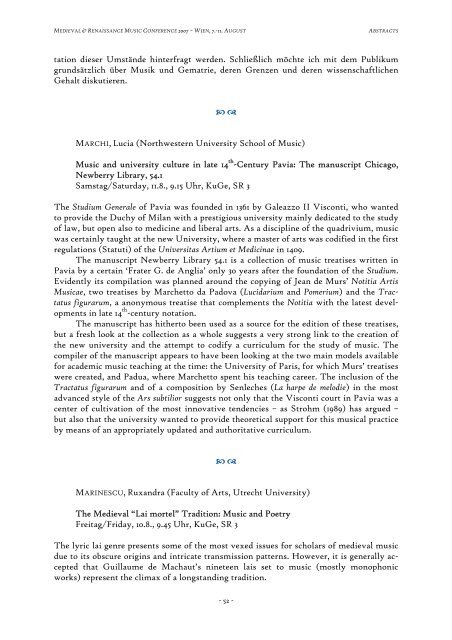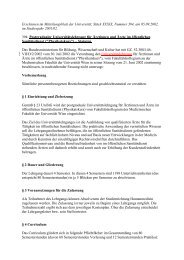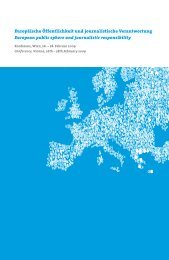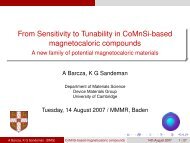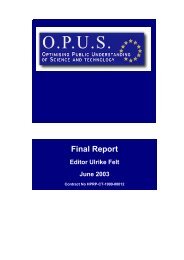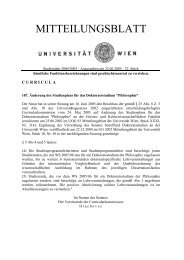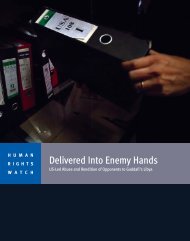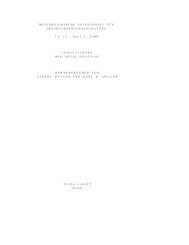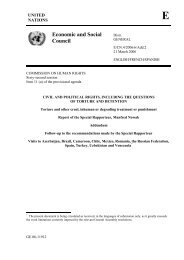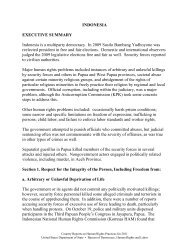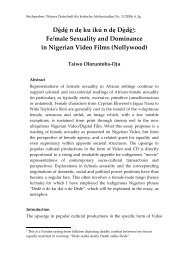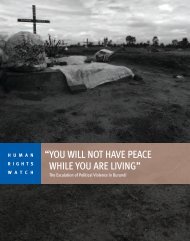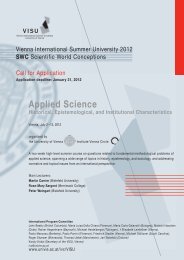(Stand: 25. Juli 2007) ANDERSON, Michael Alan ... - Universität Wien
(Stand: 25. Juli 2007) ANDERSON, Michael Alan ... - Universität Wien
(Stand: 25. Juli 2007) ANDERSON, Michael Alan ... - Universität Wien
You also want an ePaper? Increase the reach of your titles
YUMPU automatically turns print PDFs into web optimized ePapers that Google loves.
MEDIEVAL & RENAISSANCE MUSIC CONFERENCE <strong>2007</strong> – WIEN, 7.-11. AUGUST ABSTRACTS<br />
tation dieser Umstände hinterfragt werden. Schließlich möchte ich mit dem Publikum<br />
grundsätzlich über Musik und Gematrie, deren Grenzen und deren wissenschaftlichen<br />
Gehalt diskutieren.<br />
� �<br />
MARCHI, Lucia (Northwestern University School of Music)<br />
Music and university culture in late 14 th -Century Pavia: The manuscript Chicago,<br />
Newberry Library, 54.1<br />
Samstag/Saturday, 11.8., 9.15 Uhr, KuGe, SR 3<br />
The Studium Generale of Pavia was founded in 1361 by Galeazzo II Visconti, who wanted<br />
to provide the Duchy of Milan with a prestigious university mainly dedicated to the study<br />
of law, but open also to medicine and liberal arts. As a discipline of the quadrivium, music<br />
was certainly taught at the new University, where a master of arts was codified in the first<br />
regulations (Statuti) of the Universitas Artium et Medicinae in 1409.<br />
The manuscript Newberry Library 54.1 is a collection of music treatises written in<br />
Pavia by a certain ‘Frater G. de Anglia’ only 30 years after the foundation of the Studium.<br />
Evidently its compilation was planned around the copying of Jean de Murs’ Notitia Artis<br />
Musicae, two treatises by Marchetto da Padova (Lucidarium and Pomerium) and the Tractatus<br />
figurarum, a anonymous treatise that complements the Notitia with the latest developments<br />
in late 14 th -century notation.<br />
The manuscript has hitherto been used as a source for the edition of these treatises,<br />
but a fresh look at the collection as a whole suggests a very strong link to the creation of<br />
the new university and the attempt to codify a curriculum for the study of music. The<br />
compiler of the manuscript appears to have been looking at the two main models available<br />
for academic music teaching at the time: the University of Paris, for which Murs’ treatises<br />
were created, and Padua, where Marchetto spent his teaching career. The inclusion of the<br />
Tractatus figurarum and of a composition by Senleches (La harpe de melodie) in the most<br />
advanced style of the Ars subtilior suggests not only that the Visconti court in Pavia was a<br />
center of cultivation of the most innovative tendencies – as Strohm (1989) has argued –<br />
but also that the university wanted to provide theoretical support for this musical practice<br />
by means of an appropriately updated and authoritative curriculum.<br />
� �<br />
MARINESCU, Ruxandra (Faculty of Arts, Utrecht University)<br />
The Medieval “Lai mortel” Tradition: Music and Poetry<br />
Freitag/Friday, 10.8., 9.45 Uhr, KuGe, SR 3<br />
The lyric lai genre presents some of the most vexed issues for scholars of medieval music<br />
due to its obscure origins and intricate transmission patterns. However, it is generally accepted<br />
that Guillaume de Machaut’s nineteen lais set to music (mostly monophonic<br />
works) represent the climax of a longstanding tradition.<br />
- 52 -


